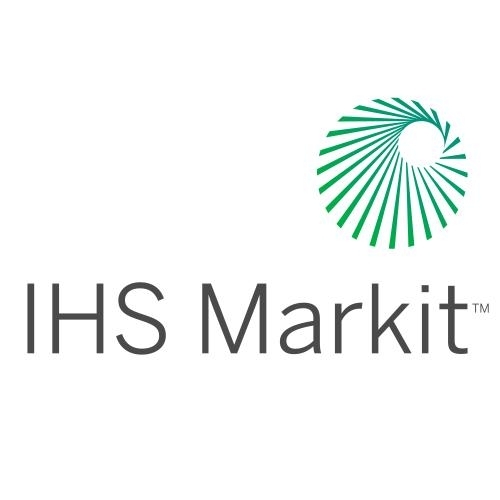
Paul Burton, Research Director
Jon Grevatt, Senior Defence Industry Analyst
 The event takes place against a backdrop of rising regional tensions and concerns about insurgency, with countries increasingly looking to modernise military aerospace capability as part of wider efforts to secure territory and enhance internal stability.
The event takes place against a backdrop of rising regional tensions and concerns about insurgency, with countries increasingly looking to modernise military aerospace capability as part of wider efforts to secure territory and enhance internal stability.
With Southeast Asian countries placing increasing emphasis on air force modernisation over the coming few years, the Singapore Airshow 2018 offers major opportunities for local and global defence companies to showcase their capabilities and position themselves for future growth in both Singapore and regional markets.
In the previous Singapore Airshow in 2016, more than 1,000 exhibitors from nearly 50 countries attended the event, including 65 of the top 100 global aerospace companies.
Underscoring the importance of the event, Jane’s analysis shows that countries across Southeast Asia will spend more on modernising their respective air forces over the next few years than they will on naval and land forces. Rising capability requirements are also spurring a high level of corporate competition, with military aerospace manufacturers from all corners of the world looking to expand regional market share.
According to Jane’s Defence Budgets, total defence investment funding (comprising defence procurement and research and development spending) in Southeast Asia during the 2018–2022 period will be nearly $40 billion, with around $13 billion — or 33 percent — spent on air forces. Navies will receive 30 percent of the investment funding, while armies will be allocated about 25 percent, with the remainder directed to cross-force priorities.
Jane’s statistics also show that Singapore will be Southeast Asia’s biggest air force investor, allocating about $4.2 billion during 2018–2022, or 34 percent of total regional air force modernisation funds during this timeframe. Given the scope of requirements, capability targets for Singapore and other regional air forces during this period include enhancing air combat, patrol, logistical, search and rescue, and force-projection capabilities.
Kelvin Wong, Senior Defence Technology Reporter
The Singapore Airshow 2018 will take on special significance given that it coincides with the 50th anniversary of the Republic of Singapore Air Force (RSAF)’s founding. The Ministry of Defence will take this opportunity to mark the start of a nine-month long celebration to recognise the service and achievements of its servicemen and servicewomen since it came into being as the Singapore Air Defence Command in September 1968.
President Halimah Yacob will officially launch the celebrations, which will be known as RSAF50, and unveil a specially painted F-15SG combat aircraft that commemorates the service’s milestone on 7 February.
The RSAF static display area will also feature twice the number of assets as compared to past events, with highlights including a runway mock-up with airfield landing aids, aircraft and weapon system simulators, and an aircraft arming demonstration. The aerial display will feature one F-15SG and two F-16Cs.
It will also receive a boost from new rotary aircraft — the Airbus H225M medium-lift and Boeing CH-47F heavy-lift helicopters — under contracts announced in late 2016.
Singapore has also embarked on an upgrade programme for its F-16C/D fleet, which is expected to be completed by 2023 and enable the RSAF to operate these aircraft out to 2030. The defence ministry has been studying the Lockheed Martin F-35 Joint Strike Fighter for years although it has remained coy about plans for the aircraft thus far.
Potential acquisitions in the near future include new maritime patrol aircraft (MPA) to replace its Fokker 50 Enforcers and new multirole transport aircraft to replace its fleet of Lockheed Martin C-130 Hercules medium lifters.
Ridzwan Rahmat, Senior Naval Reporter
In line with the rapid proliferation of underwater fighting platforms in the Asia-Pacific region is a growing requirement for aerial submarine prosecution capabilities. These include fixed-wing maritime patrol aircraft, and naval helicopters with anti-submarine warfare (ASW) sensors, and their associated sub-components and systems.
A number of Southeast Asian states have now either received or confirmed contracts for combat-capable submarine fleets. These include Malaysia, with its fleet of two Scorpène-class platforms, Vietnam, which is now operating six Kilo-class boats, and Thailand, which has confirmed a contract with China for an initial order of one S26T boat.
Indonesia has also received the first of three new Type 209/1400 newbuilds from South Korea’s Daewoo Shipbuilding & Marine Engineering, and is considering the acquisition of more boats from Russia, France or Turkey. This proliferation has led to several outstanding requirements, such as Malaysia’s programme for at least two ASW-capable MPAs.
As such, offerings by defence contractors to address this emerging requirement provide an additional focus to the multirole combat aircraft platforms that can be expected at the Singapore Airshow.
Mathan Gopalakrishnan, Senior Forecast Analyst, Military Communications/Command and Control
The Singapore Airshow will offer the manufacturers of military communication equipment a major platform. Jane’s Markets Forecast data indicates that the global military communications market is valued at $295.5 billion for next 10 years, and the Asia Pacific region represents 29.3 percent ($86.9 billion) of that market value.
In Singapore, major programmes include armed forces tactical network communications ($250 million) and FlexNet-1 radios ($134 million). Other regional states have even larger programmes in progress, most notable India, which is investing $1 billion for its army static switched communication network (ASCON), and $554 million for advanced very low frequency (VLF) receivers, with over $1 billion dollars forecast for tactical communication systems.
Meanwhile, Vietnam is expected to spend around $400 million on manportable and multi-platform radios, Indonesia $225 million on PR4G F@stnet radios and Pakistan spending hundreds of millions of US dollars on buying manportable radios.
Jane’s Markets Forecast data indicated that there are over $500 million of opportunities for Singapore over the next decade.





